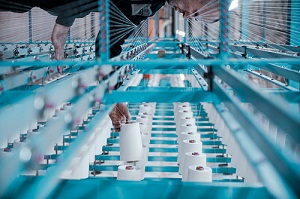The Significance of Greige Fabric Inspection in Textile Manufacturing
Woven Fabric Inspection Procedure

The inspection of woven fabric is a crucial process that helps to ensure the quality of the final product. Here is a step-by-step procedure for inspecting woven fabric.
- Preparation:
Before beginning the inspection, the fabric should be rolled out on a flat, well-lit surface. Any wrinkles or folds in the fabric should be smoothed out.
- Identification:
Identifying and cross-verifying the fabric against the production order ensures the correct fabric has been manufactured.
- Visual Inspection:
The fabric should be visually inspected for any faults such as broken yarns, double picks, floating yarns, selvage defects, skipped or missing threads, slubs, uneven weaves, uneven dyeing, snags, stains, or discolorations.
- Measurement:
Measuring the width and length of the fabric ensures it meets the required specifications.
- Weight:
Verifying the fabric’s weight ensures it falls within the required range.
- Tension:
Checking the fabric’s tension guarantees consistent tension across its entirety.
- Colorfastness:
Testing the fabric’s colorfastness ensures that the dye remains stable without running or fading during washing or exposure to light.
- Shrinkage:
Washing and drying the fabric is essential to assess any potential shrinkage.
- Packing:
Neatly folding the fabric and preparing it for shipment concludes the process.
It is important to note that the inspection process may vary depending on the specific requirements of the fabric and the customer. Additionally, a trained inspector should carry out the inspection process to ensure accuracy and consistency.
The Significance of Greige Fabric Inspection in Textile Manufacturing
Greige fabric inspection holds significant importance in the textile industry for several reasons
Woven Fabric Inspection Procedure
- Quality Assurance: Inspecting greige fabric helps ensure consistent quality standards before further processing. Identifying defects or irregularities at this stage prevents the propagation of flaws throughout subsequent production steps.
- Cost Efficiency: Detecting flaws earlier at the greige fabric stage prevents costly rework or rejection of finished products. It minimizes material wastage and reduces production delays.
- Customer Satisfaction: Ensuring the quality of greige fabric contributes to meeting customer expectations. Delivering high-quality finished products enhances brand reputation and customer satisfaction.
- Process Optimization: Inspection results aid in optimizing production processes by providing insights into machinery performance, yarn quality, or weaving/knitting issues that might impact final fabric quality.
- Compliance Standards: Compliance with industry and regulatory standards is crucial. Identifying and rectifying deviations from these standards during the greige inspection phase is essential for meeting legal and industry requirements.
- Traceability and Documentation: Inspection results offer a documented record of fabric quality. This documentation facilitates traceability, helping identify issues and their resolution, which is valuable for quality control and audits.